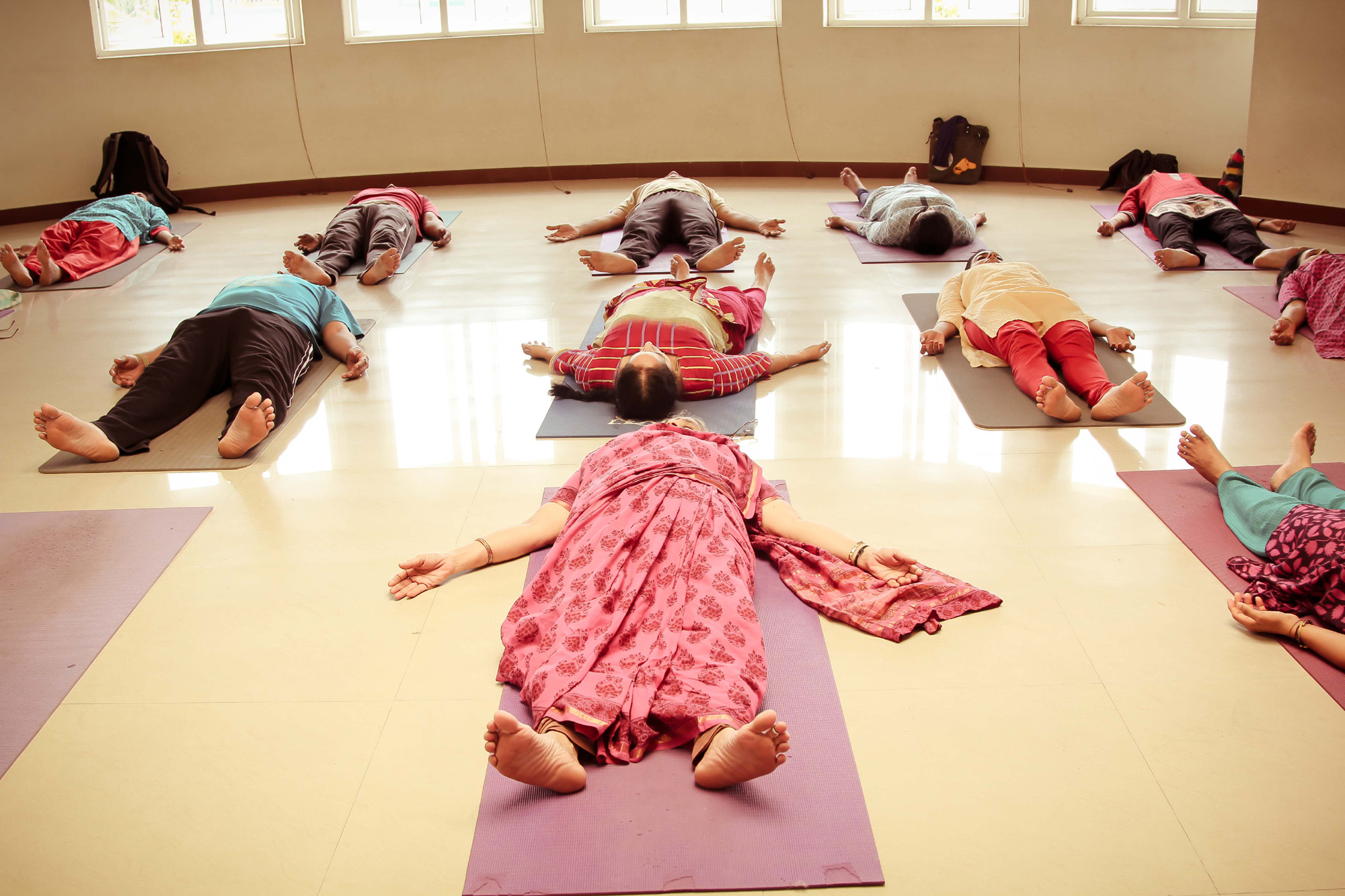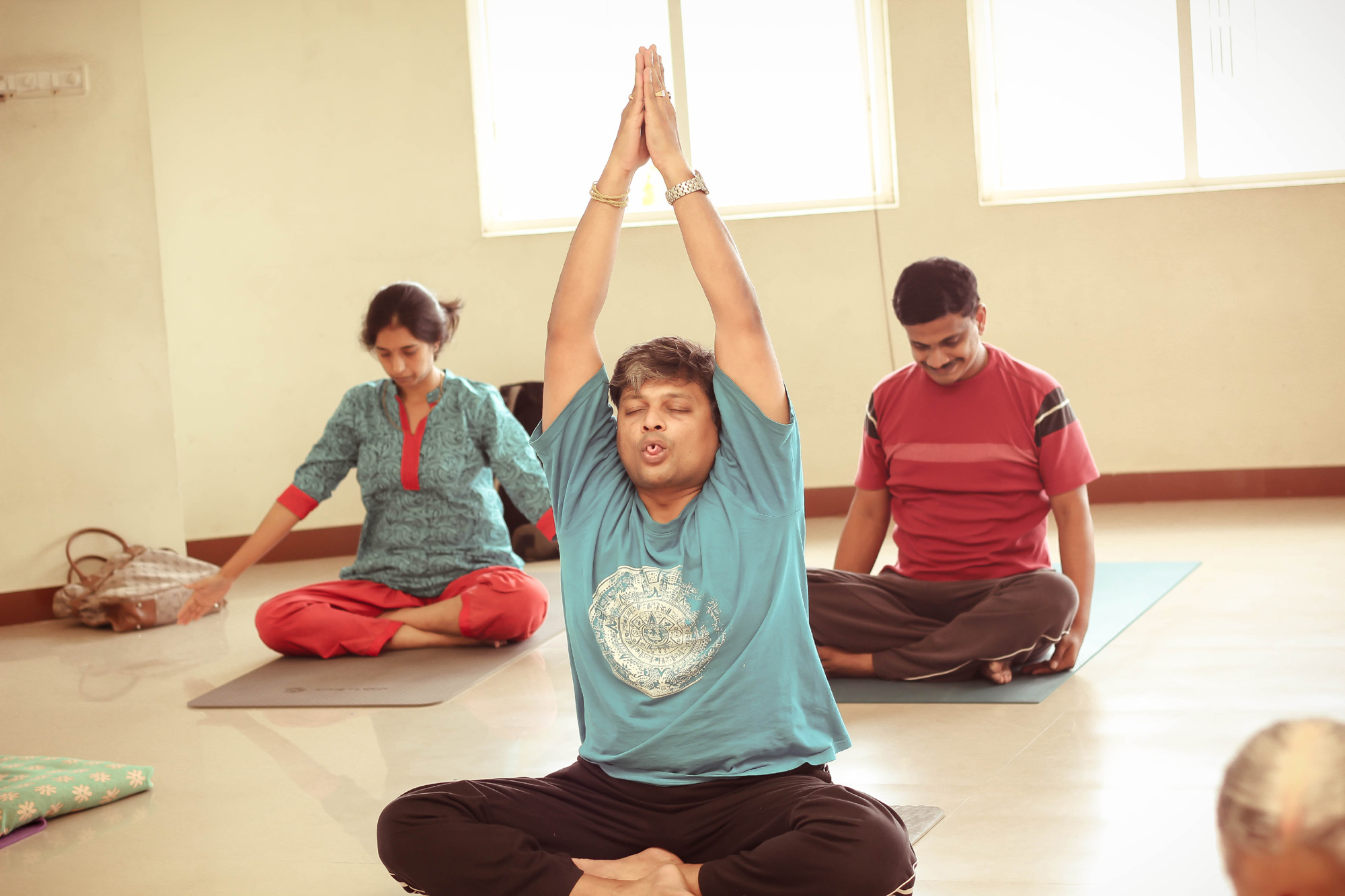Geetha Shankar, Senior Yoga Therapist & Senior Faculty, KYM
We know that the body and mind are closely interlinked and affect each other. Understanding how they are linked will help us to learn more about our present day symptoms and also how to manage them more efficiently. We will then be able to look at different ways to manage our physical symptoms and emotional well-being, using the different tools that Yoga offers us.
Stress and anxiety are everywhere, in every field in today’s world. Let us first see what anxiety and stress are.
What is anxiety?
Anxiety is an uneasy feeling due to worry or fear. It can be mild or severe. It is usual for everyone to have feelings of anxiety at some point of time in their life. For example, anxiety before an exam or an interview or on the first day at office or before we get the diagnosis report from the doctor. Anxiety can affect us both physically and mentally. When a person regularly has excessive or unrealistic anxiety, it can lead to panic attacks, which are often accompanied by other symptoms like palpitations and shortness of breath. So we see the link of mind, body and breath here.
What is stress?
Today’s lifestyle puts a lot of demands on everyone. When a person is not able to meet these demands or when there is a big difference between the demands and the person’s ability to meet those demands, it causes stress. There are times when we feel over-whelmed by things that we need to do with certain pre-fixed deadlines or we feel we cannot cope with the situation. These are some of the causes for stress.
Let us first understand one thing, that stress is not necessarily ‘bad.’ It can be very useful in many situations. At times, without this great ability to feel stress, we might not rise to the occasion or draw on our capacity/ability to face situations. Stress starts as a physical response but soon moves inwards. When we are stressed the body prepares, as if it is under some attack and switches to fight or flight mode – either we fight it or run away from it. The body releases certain hormones to prepare the body for the attack, there is a rush of energy, breathing becomes faster and the heart beats fast. This gives us enough energy to focus our attention on the problem so that we can quickly react and respond to the situation. For example, a little dog crosses the path in front of your car. You react swiftly and slam the brakes; Or a huge ferocious dog is charging towards us and in this situation, since we cannot fight it, we run as fast as we can, to escape the attack. The sudden increase in hormone levels, gives us the strength and stamina to run to safety.
But the stress is not always so helpful. When we are under stress too often or we go into a state of stress in an inappropriate situation, then the brain function can reduce and can lead to a situation where we are not able to think straight. This can cause great disturbances to our body and mind – at personal and professional levels. When this period of stress stretches over a long period of time, it can start affecting our health at many levels – physical, physiological, mental and emotional levels. There can be a spike in blood pressure levels, and there have been cases when persons have suddenly developed high sugar levels. Anxiety and agitation increases, thereby, leading to low confidence levels which results in poor performance at work. Relationships at home and the workplace suffer a setback too. The person ‘changes’ from what he/she was earlier to a new person whose appearance, outlook of life, behaviour, attitudes, ability to respond, confidence …. – everything changes .

How the many tools that Yoga offers a person in such a situation?
Yoga is a practice that involves the mind as much as it involves the body. Āsana should always be done with breath coordination. Breath is like a bridge that connects body and mind. Yoga practice that combine postures (Āsana), regulated breathing (Prāṇāyāma), and meditative or relaxation practices are what helps us to reduce stress and anxiety. By transferring focus and attention to the body and breath, Yoga can help to reduce anxiety while also releasing physical tension.
Maintaining a Yoga practice can be a great way to stay in shape, to reduce stress, and also calm the mind. Yoga helps us to slow down. It lowers blood pressure and heart rate as well. Yoga practice relieves anything from a chronic back pain to anxiety and depression. This wide range of benefits is because of the way Yoga links body, breath and mind. So people have started to realise and see Yoga as a natural remedy for stress. It also has the added benefit that it can be practiced anywhere and everywhere.
The best way to start a relaxing practice is to start with conscious breathing. When we focus on our breath, we are bringing our mind into the practice. For some time the mind forgets things that cause stress. We can also use chants after inhalation to induce relaxation. Postures such as Vīrabhadrāsana and Uttānāsana help to open up the chest and move the Prāṇa, the vital energy freely, in us. Sitting on our heels (Vajrāsana) to a forward bend which is called a child’s pose, then to Ūrdhvamukhāsana (upward looking dog posture) to Adhomukha Śvānāsana (downward looking dog posture) – these dynamic movements also help us to feel the flow of energy in us. Lying in Śavāsana and consciously regulating our breath helps the body and mind to relax.
Nāḍī Śodhana, Śītalī and Bhrāmarī Prāṇāyāma-s helps to relax, especially when done with a longer exhalation. We can finish our practice by just mentally chanting any Mantra to totally relax, even if it is a 15 minutes practice, it will definitely help if done regularly. Śrī TKV Desikachar used to insist on ‘regular practice with a positive attitude.’ There lies the key to stress-free life.

